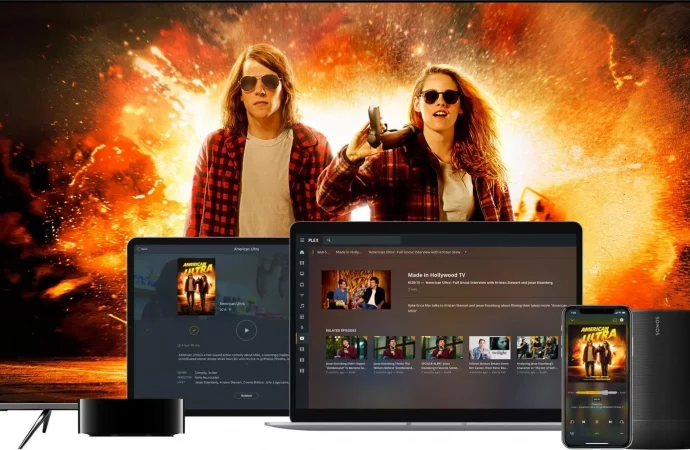Introduction In recent years, the landscape of film distribution has undergone a seismic shift, driven largely by the advent and proliferation of streaming services. This transformation has not only altered how films are delivered to audiences but also how they are produced, marketed, and consumed. This article delves into the multifaceted impact of streaming services
Introduction
In recent years, the landscape of film distribution has undergone a seismic shift, driven largely by the advent and proliferation of streaming services. This transformation has not only altered how films are delivered to audiences but also how they are produced, marketed, and consumed. This article delves into the multifaceted impact of streaming services on film distribution, exploring the benefits, challenges, and future implications of this digital revolution.
The Rise of Streaming Services

Image by: Yandex.com
The concept of streaming services is not new, but its rapid evolution and adoption have been nothing short of revolutionary. Platforms like Netflix, Amazon Prime Video, Hulu, Disney+, and HBO Max have become household names, offering vast libraries of content accessible at the click of a button. This convenience has dramatically changed consumer behavior, leading to the decline of traditional media formats like DVDs and Blu-rays, and even challenging the dominance of theatrical releases.
The Shift from Physical to Digital Distribution
- Decline of Physical Media
Physical media, once the cornerstone of home entertainment, has seen a significant decline. DVD and Blu-ray sales have plummeted as consumers increasingly prefer the convenience of streaming. This shift has reduced production and distribution costs associated with physical media, benefiting both studios and consumers.
- The Rise of Digital Platforms
Digital distribution offers numerous advantages, including instant access, a vast selection of titles, and the ability to watch on multiple devices. Streaming services have capitalized on these benefits, creating a more efficient and user-friendly distribution model. This shift has also allowed for the global distribution of films, reaching audiences that were previously inaccessible due to geographical and logistical limitations.
Impact on Theatrical Releases

Image by: Yandex.com
- Theatrical Windows and Day-and-Date Releases
Traditionally, films followed a strict release window schedule: premiering in theaters, followed by home video, and eventually television. Streaming services have disrupted this model with day-and-date releases, where films are available for streaming the same day they hit theaters. This practice gained traction during the COVID-19 pandemic when theaters were closed, and studios turned to streaming platforms to release their films.
- Box Office Implications
While some argue that streaming undermines box office revenue, others believe it complements theatrical releases by offering an alternative for those unable or unwilling to visit theaters. Hybrid release models, where films are released both in theaters and on streaming platforms, have shown that both distribution channels can coexist and even enhance a film’s overall reach and profitability.
Original Content and Exclusive Releases

Image by: Yandex.com
- Investment in Original Productions
Streaming services have invested heavily in original content, producing high-quality films and series that rival traditional studio productions. This investment has not only provided a platform for diverse voices and stories but also attracted top talent from the film industry. Original productions have become a key differentiator for streaming platforms, driving subscriptions and viewer loyalty.
- Exclusive Releases and Licensing
Exclusive releases have become a strategic tool for streaming services. By securing exclusive rights to popular films and series, platforms can attract and retain subscribers. This exclusivity extends to licensing deals, where streaming services acquire the rights to distribute films from other studios, further expanding their content libraries.
Data-Driven Distribution

Image by: Yandex.com
- Personalized Recommendations
One of the most significant advantages of streaming services is their ability to collect and analyze user data. This data-driven approach allows platforms to offer personalized recommendations, enhancing the viewing experience and increasing user engagement. By understanding viewer preferences, streaming services can curate content that resonates with their audience, driving higher viewership and satisfaction.
- Impact on Film Production
Data analytics also influence film production decisions. Streaming services can identify trends and preferences, guiding investment in content that is likely to succeed. This data-driven approach reduces the risk associated with film production and ensures that resources are allocated to projects with the highest potential for success.
Challenges and Criticisms
- Market Saturation and Competition
The success of streaming services has led to market saturation, with numerous platforms vying for consumer attention. This competition has resulted in content fragmentation, where popular films and series are spread across multiple services, requiring consumers to subscribe to multiple platforms to access their desired content.
- Impact on Traditional Studios and Theaters
Traditional studios and theaters have faced challenges adapting to the streaming revolution. The decline in physical media sales and box office revenue has forced studios to rethink their distribution strategies. Theaters, meanwhile, have had to innovate and offer unique experiences to attract audiences, such as premium formats and exclusive screenings.
- Content Quality and Quantity
While the abundance of content on streaming services is a boon for consumers, it has also raised concerns about quality. The pressure to produce a constant stream of new content can lead to a focus on quantity over quality. Additionally, the ease of access to a vast library of films can result in content overload, making it difficult for viewers to discover hidden gems.
The Future of Film Distribution

Image by: Yandex.com
- Technological Advancements
Technological advancements will continue to shape the future of film distribution. Innovations such as virtual reality (VR) and augmented reality (AR) have the potential to revolutionize the viewing experience, offering immersive and interactive content. Additionally, improvements in streaming technology, such as higher resolution and faster buffering, will enhance the quality and accessibility of digital content.
- Global Reach and Accessibility
Streaming services have democratized access to films, breaking down geographical barriers and reaching global audiences. This trend is likely to continue, with platforms expanding their reach to emerging markets and offering localized content to cater to diverse audiences. The global distribution of films will foster cross-cultural exchange and promote a more inclusive and diverse entertainment landscape.
- Evolving Business Models
As the streaming landscape continues to evolve, business models will adapt. Subscription-based models may be supplemented by ad-supported tiers, offering consumers more choices and affordability. Additionally, partnerships between streaming services and traditional studios may become more common, creating synergies and expanding content libraries.
Conclusion
Streaming services have undeniably redefined film distribution, offering a more efficient, accessible, and personalized viewing experience. While challenges remain, the benefits of digital distribution are clear, and the future of film distribution is poised for continued innovation and growth. As technology advances and consumer preferences evolve, streaming services will play an increasingly central role in shaping the entertainment landscape, offering endless possibilities for filmmakers and audiences alike.






















